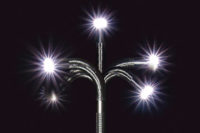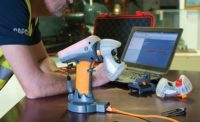Software & Analysis
Contact vs. Noncontact Measurement for Computer-Aided Inspection
Make the right choices to meet operational needs.

When deciding on a measurement method, establish what is the tightest accuracy required by the design specifications and work to them. Source: Creaform

The Creaform Handy Scanner provides highly portable laser scanning. Source: Charles Olivier-Roy

This depicts annotations of comparison data of a crankshaft in Geomagic Qualify. Source: 3D Systems Geomagic

Annotations and measurements created using contact measurement in Rapidform XOV are shown here. Source: 3D Systems Geomagic

The COMET L3D, a highly portable, blue light noncontact scanning system from Steinbichler, provides accurate scanning of parts. Source: Steinbichler

The Faro Edge arm delivers the flexibility to both probe and scan parts. Source: FARO






Define Your Needs First
Accuracy of Scanning
Speed of Measurement
Price
Identify Your Budget
What Technology is Right for Me?
Contact Solutions
Noncontact Solutions
Software for Inspection
Reporting Tools
|
TECH TIPS
|
Looking for a reprint of this article?
From high-res PDFs to custom plaques, order your copy today!











